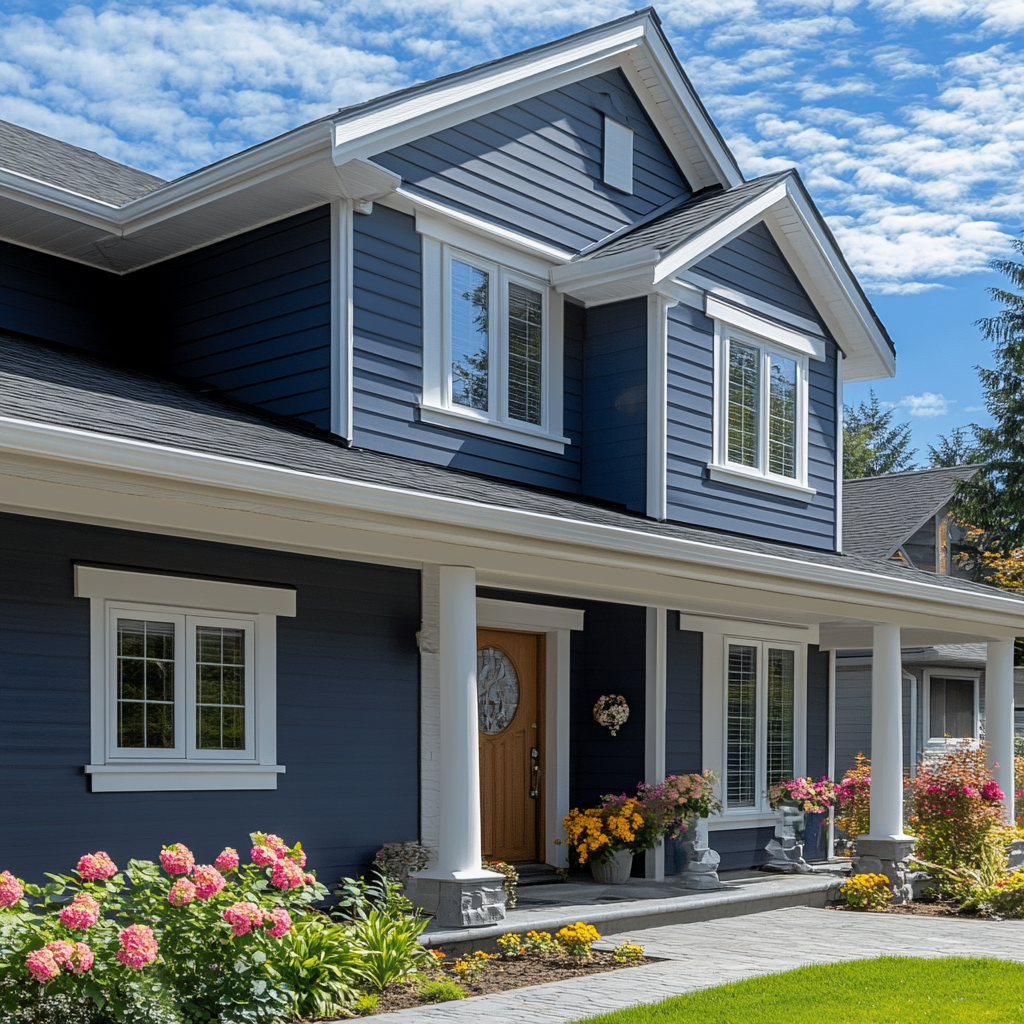Ready to get in touch?
You've got options! You can call or text our number.
601-522-7472
Call Now for a Free EstimateYou can also reach us by email.


If you live in a neighborhood where vinyl siding and aluminum PVC-coated fascia are common, you may have noticed that these materials can become faded or even begin peeling over time. While many homeowners assume that replacing these components is the only option, the reality is that you can easily paint both vinyl siding and aluminum fascia to restore their appearance. Not only does this save money, but it also adds an extra layer of protection to your home. In this article, we’ll walk through the benefits, process, common questions, and even the costs involved when it comes to painting your siding and fascia.
One of the main reasons homeowners opt to paint their vinyl siding and aluminum fascia is to improve the overall look of their home. Over time, exposure to the sun’s UV rays and weather elements can cause these surfaces to fade. Painting them brings back color and vibrancy, helping to keep the home’s curb appeal intact.
Another significant benefit of painting your vinyl siding and fascia is the added layer of protection it provides. Paint helps shield these surfaces from UV rays, moisture, and dirt, preventing further damage like cracking or fading. A fresh coat of paint can extend the life of your siding and fascia and keep them looking new for longer.
Repainting is a much more affordable option compared to replacing vinyl siding or aluminum fascia. Replacement costs can be high, but with paint, you can rejuvenate these surfaces for a fraction of the price. This makes painting a great solution for homeowners who want to improve their home’s appearance without breaking the bank.
The first and most important step is preparation. Clean the surfaces thoroughly to remove dirt, mildew, and debris. A pressure washer is a great tool for cleaning vinyl siding, while aluminum fascia can be scrubbed using a mild detergent solution. Make sure the surfaces are dry before proceeding to the next steps.
Vinyl siding generally doesn’t require sanding, but lightly scuffing the surface with fine sandpaper can improve paint adhesion. Aluminum fascia may need sanding to help the paint stick. After sanding, apply a bonding primer designed for the specific material. This step ensures that the paint adheres well and provides a longer-lasting finish.
For vinyl siding, use paint formulated specifically for plastic or vinyl. These paints contain additives that prevent cracking and peeling. For aluminum fascia, an exterior-grade acrylic latex paint works best. It’s important to choose high-quality, UV-resistant paints to ensure longevity.
Apply paint using a high-quality brush, roller, or sprayer. If you’re using a sprayer, be sure to mask off areas that should not be painted. A two-coat application is recommended for a smooth and durable finish. Allow the first coat to dry completely before applying the second coat.
After the final coat of paint has dried, inspect the work for any areas that might need touching up. Once satisfied, remove painter’s tape and clean up surrounding areas.
Materials: The main costs involved in painting the exterior of your home include paint, primer, and cleaning supplies. Depending on the brand and type of paint, you can expect to pay between $25 to $60 per gallon. For most homes, you’ll need around 10–20 gallons of paint, depending on the size of your house and the number of coats required. Primer typically costs around $15–$30 per gallon.
Tools: If you don’t already have the necessary tools, purchasing a sprayer, ladder, or paint rollers could add $100 to $300 to your total costs. If you opt for renting equipment, expect to pay between $50 to $150 per day.
Labor: The time you’ll spend on the project depends on the size of your home, but for a typical house, expect the job to take several days or even a week. While doing it yourself can save you money, it’s important to factor in the labor costs of your time.
If you decide to hire a professional painter to tackle the job, the costs will be higher but can result in a higher-quality and longer-lasting finish. Professional painting services typically charge anywhere from $1.50 to $4.00 per square foot for painting siding or fascia, depending on factors like the size of the house and the complexity of the job. For an average-sized home (2,000 to 2,500 square feet), you can expect the total cost of hiring professionals to be between $2,500 and $10,000.
While hiring a professional may cost more initially, the benefits of their experience, expertise, and equipment can ensure that the job is done correctly and that the finish lasts longer. Additionally, a professional can more efficiently manage any unexpected challenges that arise during the project.
While painting your vinyl siding and fascia can seem like a simple DIY project, there are potential problems that homeowners might encounter if they decide to tackle the job themselves.
Painting your vinyl siding and aluminum PVC-coated fascia is a smart way to boost your home’s curb appeal, protect these surfaces, and save money compared to full replacements. While the DIY route can be cost-effective, it's important to weigh the time, labor, and potential risks involved. Hiring a professional painter can ensure a long-lasting, high-quality result and avoid common pitfalls.
Whether you choose to do the job yourself or bring in a professional, repainting your siding and fascia is an investment that can improve your home’s appearance and value for years to come. If you’re considering painting, make sure to plan carefully, use the right materials, and take the proper precautions for the best possible outcome.
You've got options! You can call or text our number.
You can also reach us by email.